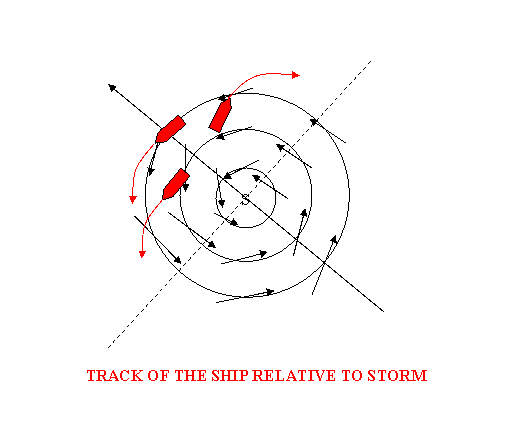Ship
entered in TRS-Avoiding Action

|
|
Inform C/O, order him to secure deck. |
||||||||||||||||||||
|
|
Inform C/E, order him to secure E/R. |
||||||||||||||||||||
|
|
Plot storm’s position and observe its movement.
|
|
|
Determine sector in which the ship is in.
|
||||||||||||
|
|
Use appropriate bad weather maneuver as per the ship's position relative to storm. |
||||||||||||
|
|
In dangerous semicircle, keep the wind on starboard bow, about four points. Keep on altering to starboard as the wind veers. |
||||||||||||
|
|
In navigable semicircle or in the path, keep the wind on starboard quarter, keep on altering as the wind backs.
|
||||||||||||
|
|
Order OOW to
|
||||||||||||
|
|
Arrange a FSA for storm. |
||||||||||||
|
|
Strengthen the bridge watch and ensure proper look out. |
||||||||||||
|
|
Change over to manual steering if auto pilot cannot cope up with weather condition. |
||||||||||||
|
|
Continuous watch as visibility can be reduced. |
||||||||||||
|
|
Instruct C/O to:
|
||||||||||||
|
|
I will remain outside of a radius of 200nm from storm center. If necessary: |
||||||||||||
|
|
Ensure vessel does not roll or pitch heavily, as it may cause
|
||||||||||||
|
|
All preparations for heavy weather to be entered in official log book in details and deck log book. |
||||||||||||
|
|
I will keep in mind:
|
||||||||||||
|
|
Ensure personnel get enough rest, considering fatigue due to storm. |
||||||||||||
|
|
No body to go on deck without C/O’s permission. |
||||||||||||
|
|
Instruct C/E to check steering gear and M/E performance regularly. |
||||||||||||
|
|
Inform following parties about storm and amended ETA:
|

Comments
Post a Comment